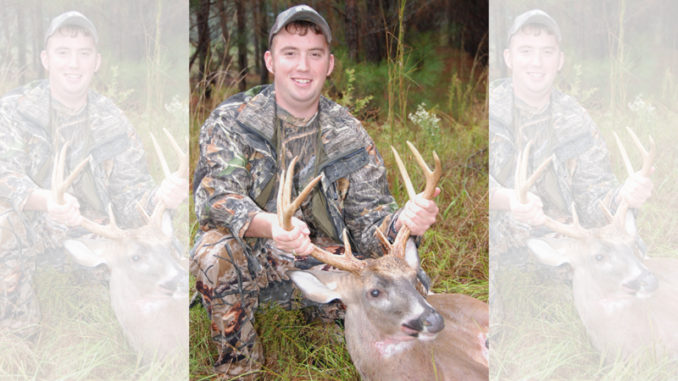
It’s the Last Hurrah, so make it count
The Last Hurrah, the Final Countdown, the Fourth Quarter — it’s late-season deer time . Call it what you want; the end of deer season is upon us. It’s a time when, statistically speaking, more than half the people who hold big-game hunting licenses have decided that doing something else, anything else, is better than sitting in a deer stand.
Late-season deer hunting is a lot like post-spawn bass fishing. The big event is over. The hunting grounds and water have been beaten to death. And the quarry has taken off for seemingly parts unknown.
According to Mike Johnson, general manager of the Clinton House Plantation in Clinton, S.C., deer have narrowed their interests into basic survival needs to get ready for the winter.
“Late-season deer are only gonna focus on about three things: bedding, water and food. Those three things are going to be high on their list.”
If you planted food plots during the summer or early fall, Johnson said you already know what’s in there. Hopefully, you planted a variety of greenery that will ripen and be attractive to deer late in the season.
“By December, peas are gone, clover is gone. That’s why you want to make sure you plant your grains like wheat, oats and rye grass,” said Johnson. “Other than food plots, a couple of other options, both natural and man-made, can help you find deer.”
Check for late-season natural browse
For public-land hunters who may not have the luxury of food plots, certain species of natural browse will ripen late in the fall. Though harder to identify than a planted food plot, they will also attract deer.
This broad category of late-season browse includes things like poplar buds, hemlock branches, multi-floral rose and maple saplings. In areas with limited farming activity, browse makes up the majority of a deer’s late-season diet. Fortunately, browse is typically hidden inside overhead cover. So deer will not be as reluctant to visit browse patches during daylight as they would a planted food plot.
Most hunters think about hunting from trees, but never over fallen trees as a food source. Scott Emery of Blue Ridge, S.C.,said a single fallen tree can provide a lot of nutrients for a deer.
“When I’m scouting during the late season, I look for areas where trees have fallen from wind damage or recent logging activity,” said Emery. “You will find trails coming in and out of these areas that let you know where to locate your stand to increase your chances of seeing a good, late-season buck.”
Don’t forget the acorns, because the deer haven’t
Most hunters think of acorns as an early season food source, but deer continue seeking them out through the end of the year because they provide a lot of high-energy fat that need. By Thanksgiving and early December, the species of oak doesn’t much matter. Emery said acorns from white oaks and red oaks will have been on the ground the longest and may have rotted, but smaller acorns like water oaks and pin oaks will stick to trees longer and fall later in the season.
“I would bet that somewhere, hidden in one of the long-forgotten areas of your property, is a water oak or two that’s still dropping. It’s probably right in the middle of some really thick cover, but you figure out how to get in there and hunt it, and you’ll be surprised what you see,” he said.
Bill Thompson of Goldsboro, N.C., has killed more than his share of trophy bucks from the Carolinas and Georgia to as far away as Kentucky and Illinois. One of his favorite late-season scenarios is to hunt a clear-cut or cutover area.
Carry a good set of binoculars
“Clear-cuts offer thick cover in plain sight. Find a high knoll or place a stand on a tree at the highest point you can find on a clear-cut. Climb up high, and watch for deer,” he said. “That’s when a good set of binoculars becomes a great tool. It can get tedious staring through binoculars for several hours. But watch for any detail — the flick of an ear or tail, an antler sticking up through the cover. You’ll be surprised how many deer you can see that you never thought would be there.”
Deer movement during daylight hours — or the lack thereof — with regard to moon phase has been a well-used excuse for ages when a hunter returned home empty handed. Late in the season, cold weather might just be the great equalizer in this debate. When the moon is full and night-time temperatures drop, deer will walk and feed all night.
In this scenario, deer head for bedding areas at first light and stay put until late the next afternoon. During the dark of the moon, or when there’s heavy cloud cover at night, deer are typically thought to be active later in the morning. Johnson doesn’t put much stock in the full-moon philosophy.
“I hear a lot of full-moon stories. I think it’s a better excuse than most for why a hunter didn’t see any deer,” Johnson said. “Truth is, I don’t think the full moon affects deer as much as some hunters like to believe. It will change their patterns, and that’s a good thing. Especially late in the season when they get stuck in doing the same thing to avoid hunting pressure.”
Change things up
Johnson stressed that a deer hunter who hunts the same stands all season without changing strategies is bound to continue the lack of success through the late season.
Changes in weather patterns can help. But of more use is to get out and look for fresh deer sign. This gives the hunter clues as to where deer are moving and when. After a hard rain or a snowfall is a good time to look for fresh tracks that signal deer movement preferences.
“Snow is pretty to look at from a deer stand. We had a pretty big snow last November. Most hunters just think it’s miserable to sit in and be cold and wet,” Johnson said. “We don’t get enough snow here to use it for patterning deer like they do up North. A good, hard rain will clean up all your old tracks, and that works better in the South if you’re trying to find a big deer or just numbers of deer by their tracks.”
The final late-season deer strategy is to pattern a secondary rut or trickle rut. Based on the differing ages and maturity of does and fawns, many hunters rely as much on secondary rut hunting as they do the primary rut. The best strategy might be somewhere in the middle.
Deer calls can still be effective
Whether you consider the rut to be a distant memory or not, don’t hang up your deer calls. Both bucks and does can be responsive to calls. Like duck calling, when using a deer call during the late season, less is more.
The so-called second rut can’t rival hunger pangs for sparking deer activity. If a doe happens to come into estrus in an area where bucks are present, it might provide a breeding opportunity no buck can resist. But most likely, it was food that brought them together in the same place.
The best strategy will be to look for food sources in and around heavy cover, then try food plots or agricultural fields. If a decent buck can satisfy his appetite within the confines of heavy cover, there’s no reason for him to risk feeding in the wide open.

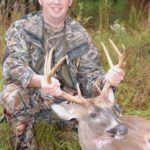
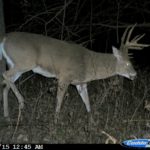
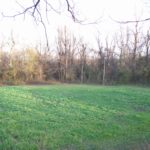


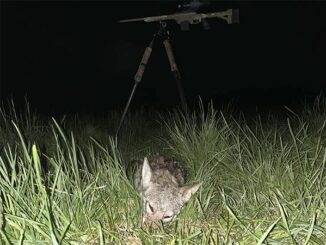

Be the first to comment